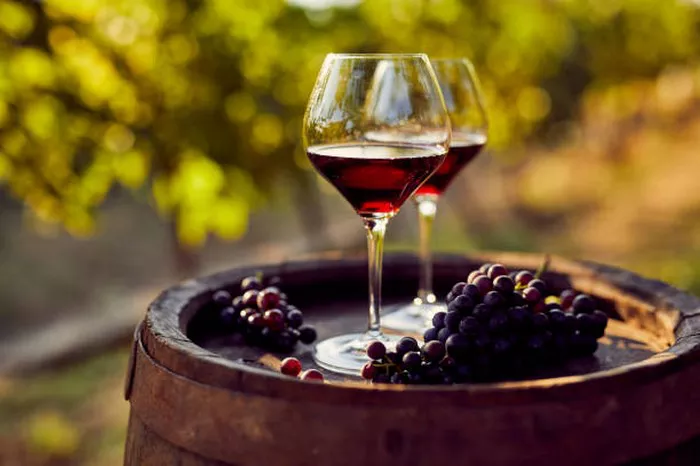Sangria, the refreshing Spanish concoction that combines wine with fruit and sweeteners, has gained widespread popularity for its vibrant flavors and easy-to-customize nature. Crafting the perfect sangria involves blending various ingredients to complement the wine base, leading many enthusiasts to inquire, “What can I mix with sangria wine?” This question invites a journey through a spectrum of flavors, fruits, spirits, and creative elements that elevate the classic drink into an irresistible beverage suitable for any occasion.
Understanding Sangria’s Foundation
At its core, sangria relies on wine, typically red or white, as the foundational element. The choice of wine significantly influences the drink’s taste profile. Reds, like Tempranillo or Garnacha, offer a robust, fruity base while whites, such as Sauvignon Blanc or Chardonnay, present a crisper and lighter canvas for experimentation. When considering “What can I mix with sangria wine,” recognizing the wine’s inherent characteristics lays the groundwork for complementary ingredients.
Embracing the Power of Fruits
Fruits are the quintessential stars in sangria, lending their sweetness and tanginess to the mix. The possibilities are abundant: oranges, lemons, limes, apples, berries, peaches, and more. These fruits add depth, color, and varying degrees of sweetness to the drink. The key is to select fruits that harmonize with the wine’s flavor profile. Red wine might pair well with orange slices and berries, while white wine could complement peaches and green apples. As you ponder, “What can I mix with sangria wine,” envision a colorful palette of fruits adding visual and gustatory delight.
Exploring Sweeteners and Syrups
Sweeteners play a pivotal role in balancing the acidity of wine and tartness of fruits in sangria. Traditional recipes often call for sugar or simple syrup, but modern mixologists experiment with agave nectar, honey, or flavored syrups like elderflower or raspberry. These additions infuse nuanced sweetness and depth, accentuating the drink’s overall taste. When contemplating “What can I mix with sangria wine,” consider the spectrum of sweeteners available to elevate the drink’s complexity.
Elevating with Spirits and Liqueurs
While wine forms the base, the addition of spirits or liqueurs can elevate sangria to new heights. Brandy, a classic choice, complements red wine varieties, imparting depth and richness. For white wine sangria, options like rum or vodka can add a subtle kick. Additionally, liqueurs such as triple sec, Grand Marnier, or peach schnapps introduce distinct flavors, further enhancing the drink’s complexity. When pondering “What can I mix with sangria wine,” don’t overlook the transformative potential of spirits and liqueurs.
Experimenting with Herbs and Spices
To add an intriguing dimension to sangria, incorporating herbs and spices can be a game-changer. Fresh herbs like mint, basil, or rosemary impart aromatic undertones, while spices such as cinnamon, cloves, or star anise infuse warmth and depth. These elements can be subtle accents that heighten the overall drinking experience. When contemplating “What can I mix with sangria wine,” delve into the realm of herbs and spices to unlock new layers of flavor.
See Also: How Many Calories in a Bottle of Asti Spumante?
Crafting Specialized Variations
Beyond the classic red and white sangrias, there exists a world of specialized variations that cater to diverse preferences and occasions. Rosé sangria, for instance, provides a delicate balance between red and white varieties, offering a lighter and fruitier alternative. Sparkling sangria, incorporating champagne or sparkling wine, adds effervescence and elegance to celebrations. Experimenting with different wine varietals, fruits, and additional elements is a creative avenue to address the question, “What can I mix with sangria wine.”
Creating Non-Alcoholic Versions
For those preferring non-alcoholic options, crafting sangria-inspired mocktails offers a delightful alternative. Using non-alcoholic wine or grape juice as a base, combined with a medley of fruits, sweeteners, and soda or sparkling water, results in a refreshing beverage suitable for all ages. These mocktails retain the essence of traditional sangria while catering to a broader audience seeking alcohol-free options. When considering “What can I mix with sangria wine,” exploring non-alcoholic variations expands the drink’s inclusivity.
Pairing Sangria with Cuisine
Sangria’s versatility extends beyond its ingredients; it complements various cuisines, enhancing dining experiences. Red sangria pairs excellently with hearty dishes like paella, grilled meats, or tapas, while white sangria harmonizes with seafood, salads, and lighter fare. The drink’s fruity and vibrant character serves as a refreshing counterpart to savory and spicy flavors, making it a versatile accompaniment to diverse culinary offerings. When contemplating “What can I mix with sangria wine,” envision its role as a culinary enhancer.
Innovating and Personalizing
Ultimately, the beauty of sangria lies in its adaptability and scope for personalization. Experimentation and innovation pave the way for creating unique versions tailored to individual tastes. Whether it’s incorporating exotic fruits, infusing unconventional flavors, or experimenting with presentation styles, the quest to answer “What can I mix with sangria wine” encourages continual exploration and creativity in mixology.
In conclusion, the art of mixing sangria encompasses a delightful interplay of wine, fruits, sweeteners, spirits, herbs, and personal flair. As one delves into the possibilities, the answer to “What can I mix with sangria wine” becomes an ever-expanding realm of discovery and enjoyment, offering a tapestry of flavors waiting to be explored and savored. Cheers to the endless possibilities of crafting the perfect sangria tailored to individual preferences and occasions!


